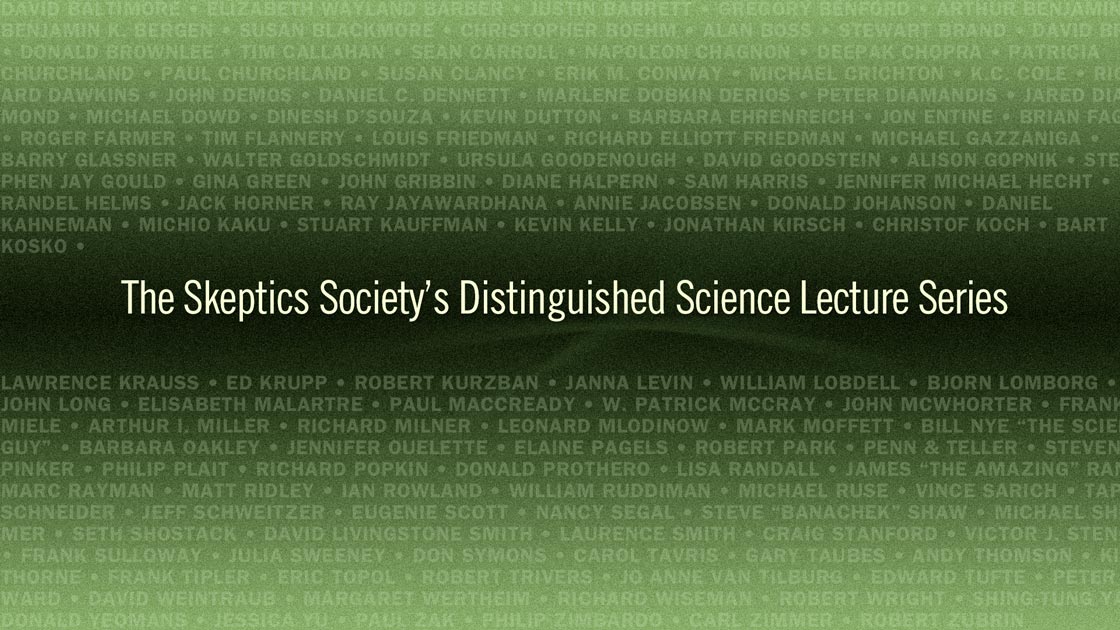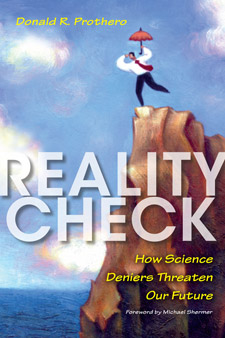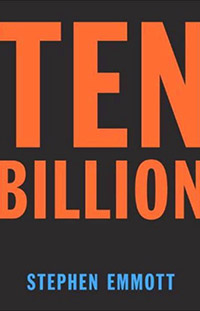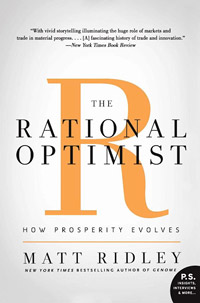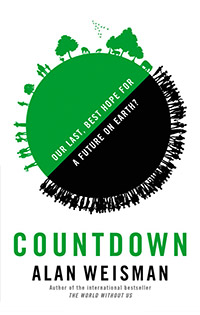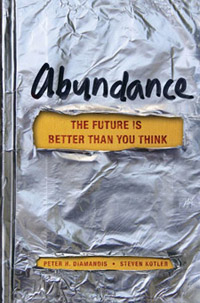In this week’s eSkeptic:
Our Next Lecture at Caltech
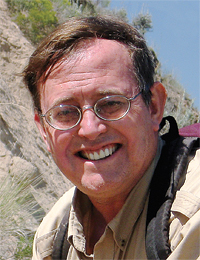
Abominable Science & Reality Check
Sunday, November 17, 2013 at 2 pm
Baxter Lecture Hall
GEOLOGIST, PALEONTOLOGIST, EVOLUTIONARY THEORIST AND SOCIAL ACTIVIST in the name of science and skepticism, Dr. Donald Prothero talks about his two new books that deal with battles over evolution, climate change, childhood vaccinations, and the causes of AIDS, alternative medicine, oil shortages, population growth, and the place of science in our country. Many people and institutions have exerted enormous efforts to misrepresent or flatly deny demonstrable scientific reality to protect their nonscientific ideology, their power, or their bottom line. To shed light on this darkness, Prothero explains the scientific process and why society has come to rely on science not only to provide a better life but also to reach verifiable truths no other method can obtain.
And on the lighter side, Prothero talks about how large numbers of people believe in demonstrably false phenomena, from UFOs and ESP to Bigfoot and the Loch Ness monster. Even though these fictions have been repeatedly debunked and discredited, they persist in the human imagination and influence our beliefs and our society. Prothero gives an entertaining and educational overview of a variety of cryptids, presenting both the arguments for and against their existence and systematically challenging the pseudoscience perpetuating their myths.
A book signing will follow the lecture.
The views expressed by the speaker are solely those of the speaker. The content of this presentation does not necessarily reflect the opinion of the California Institute of Technology and should not be taken as an endorsement.
Order the books from Shop Skeptic
and have them signed at the lecture
Don’t Miss December’s Lecture!
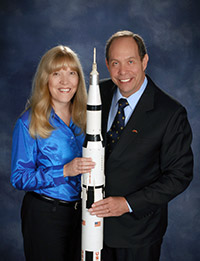
How To Boldly Go into Space: An Insider’s Look into How Space Missions are Created, Funded, Built, Launched, and Run
with Dr. Linda Spilker and Dr. Thomas Spilker,
Sunday, December 8, 2013 at 2 pm
Baxter Lecture Hall
DRAWING ON THEIR DECADES OF WORK FOR NASA and the Jet Propulsion Laboratory (JPL) Drs. Linda and Thomas Spilker give us an inside view of what goes into the unmanned space program, from the origin of a space mission, to how the funds are found to finance it, to how the spacecraft is designed and built, and to the launching and running of such a mission, often designed to last for years and even decades. How do you get a spacecraft to Saturn, anyway? Who decides what it should study when it gets there? What happens when something goes wrong? And, as a society, why do we explore the solar system (and beyond) and what do we learn from it? Don’t miss this revealing account of what rocket scientists do. READ more…

NEW ON SKEPTICBLOG.ORG
Abominable Science! Prompts Bigfooters to Begin Homework They Should Have Done More Than 50 Years Ago
Daniel Loxton congratulates one of his own critics for making some all-too-rare progress on a Sasquatch case. Better late than never!

MonsterTalk Special #3
Seeing is Believing
“I know what I saw.” So say many witnesses to the bizarre and unusual—and even the mundane. But do you really know what you saw? In this special episode of MonsterTalk, memory expert Elizabeth Loftus and psychologist Richard Wiseman explain how perilous and frail are the tools and materials we use to build our fortresses of certitude.

About this week’s eSkeptic
How many people can our planet hold? Can we expect calamities to result from overpopulation and resource depletion when our planet reaches ten billion people? In this week’s eSkeptic, Michael Shermer reviews two books: Ten Billion by Stephen Emmott (Vintage Books, 2013), and Countdown: Our Last, Best Hope for a Future on Earth? by Alan Weisman (Little Brown, 2013). This review appeared in the Wall Street Journal on October 4, 2013.
The End is Nigh…Or Not
by Michael Shermer
Bad news books about the next looming catastrophe have a long literary pedigree that far surpasses those representing good news and progress. As John Stuart Mill noted in 1828: “I have observed that not the man who hopes when others despair, but the man who despairs when others hope, is admired by a large class of persons as a sage.” The two sage seekers under review here focus primarily on the coming calamities that they project will be the result of overpopulation and resource depletion when our planet reaches ten billion people.
Stephen Emmott is head of Computational Science at Microsoft Research in Cambridge, England, and by his computations when the world hits ten billion people we’re doomed. His conclusion is as colorful as it is misguided: “I think we’re fucked.” He despairs beyond even the most pessimistic of doomsayers. “We urgently need to do—and I mean actually do—something radical to avert a global catastrophe. But I don’t think we will.” This is an odd little book with one or two short sentences per page that if compressed would barely amount to a magazine article. It flows like a PowerPoint presentation, with text slides alternating with hockey-stick curves of population growth, CO2 levels, global warming, and resource depletion and pictures of overcrowded cities and landfills. There are no references to support any of his claims, and his extrapolations from geometric growth curves are mired in 19th century Malthusian thinking, as if science and technology were stuck in the past and as if time stops in the year 2050.
In fact, the rate of population growth is slowing and in many Western countries there is a birth dearth. For example, the UN projects a 2050 population for Russia of 111 million, down from 147 million in 2000. Europe as a whole will shed 70 million people by 2050 as the current fertility rate of 1.59 children per woman is below the replacement rate of 2.1 (0.1 is added to account for childhood deaths and a small male-biased sex ratio). Half the world now has fertility rates below the replacement rate, with the high end fertility rates of nations such as Niger (7.19), Buinea-Bissau (7.07), Burundi (6.8), and Liberia (6.77) decreasing as they become developed nations, and the low end countries such as Japan (1.27), Singapore (1.26), South Korea (1.21) and Hong Kong (0.97) scrambling to deal with the economics of substantially smaller populations. Many scientists predict that the ten billion figure will drop back down to around where we are now—or lower—by 2100. At the very least, a responsible scientist would include the UN’s own projections of low (6 billion), medium (10 billion) and high (16 billion) world population figures for 2100; instead, Emmott simply presents his own unsubstantiated projection of 28 billion and spindoctors his doomsday scenarios from there.
Worse, environmental extremists like Emmott actually hurt the very movement they want to help by causing thoughtful people to discount more modest works that identify very real problems (such as water resources). When such extreme accounts are debunked—as this book has roundly been—many people tend to discount other books in the genre as more of the same apocalyptic hyperbole. As an antidote to Emmott’s self-proclaimed “rational pessimism” I recommend Matt Ridley’s The Rational Optimist and Peter Diamandis’s Abundance: The Future is Better Than You Think.
At the more reasonable end of the genre’s spectrum is Alan Weisman’s Countdown. His 2007 book, The World Without Us, was a surprise bestseller in creatively imagining (and documenting) what would happen to the planet were all humans to suddenly disappear. Turns out nature would in short order erase pretty much everything we’ve done. Countdown imagines the opposite, and by Weisman’s account, at the rate we’re going nature may very well do what she did in the prequel, given the biological phenomenon of population collapses caused by famine, disease, ecological degradation and—in the case of our species—warfare, pollution and other byproducts of a big-brains. Countdown is a gripping read by a fair-minded investigative journalist who interviewed dozens of people in 21 countries as well as scoured the literature (all well documented) to deliver not so much a doomsday narrative but a warning followed by practical solutions employed by various countries to get control of their population, such as in Iran, where education and incentives for voluntary state-funded birth control stanched their looming overpopulation problem.
Of his interlocutors Weisman asks four basic questions: (1) How many people can our planet hold? (2) Is there an acceptable, nonviolent way to convince people to limit their family size at or below replacement level? (3) How much ecosystem is required to maintain human life (or what can’t we do without?) (4) Can we design an economy with a stable or shrinking population? As Weisman discovers, these are extremely difficult questions to answer and they admit many complications and qualifications. On the first question, for example, the answer very much depends on the standard of living—mud huts or massive mansions—along with a host of related factors, including available local resources or the opportunity to trade for them, political stability and the like, along with the ability to cope with Black Swan events (from extreme weather to economic bubbles).
Weisman defines an “optimum population” as “the number of humans who can enjoy a standard of living that the majority of us would find acceptable,” which he says is European: “far less energy-intensive than the United States or China, far more hospitable than much of Africa or Southeast Asia, and with the highest possible percentage of educated, enabled women—which may be the most effective contraceptive of all.” And that might be the most poignant observation in the entire book.
In the end we would all do well to respect the “Law of Prediction,” described by the population biologist Joel Cohen in his definitive 1995 book How Many People Can the Earth Support? (anywhere from 4–16 billion!): “The more confidence someone places in an unconditional prediction of what will happen in human affairs, the less confidence you should place in that prediction.” Nevertheless, Cohen predicts that by 2100 the world’s population could be back down to six billion with only an average decrease of half a child per woman, an effect that can be achieved by simply educating and enabling women everywhere on Earth. ![]()
Skeptical perspectives on the future…
-
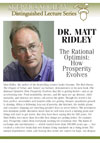 The Rational Optimist:
The Rational Optimist:
How Prosperity Evolves
with Dr. Matt Ridley
-
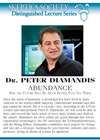 Abundance: Why the Future Will Be Much Better Than You Think
Abundance: Why the Future Will Be Much Better Than You Think
with Dr. Peter Diamandis
-
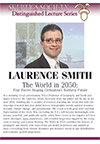 The World in 2050: Four Forces Shaping Civilization’s Northern Future
The World in 2050: Four Forces Shaping Civilization’s Northern Future
with Laurence Smith
-
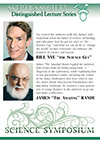 The Future of Science, Technology,
The Future of Science, Technology,
and Education
with Bill Nye and James Randi


